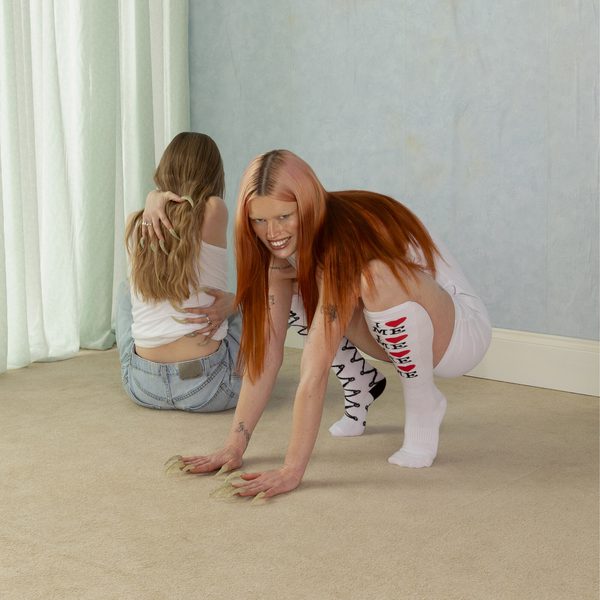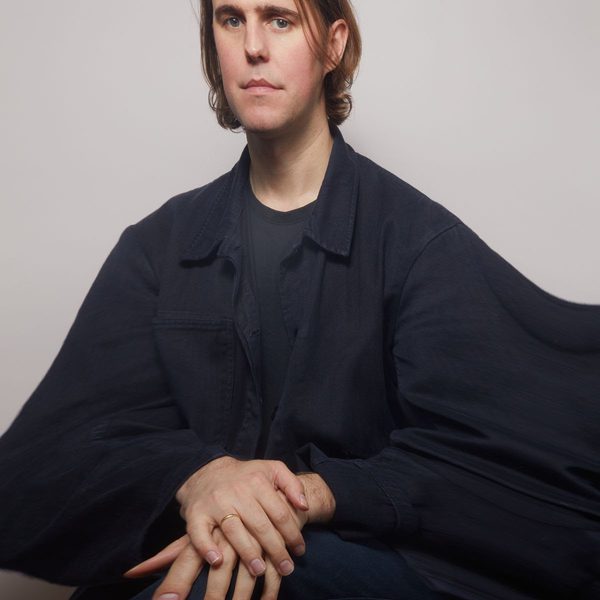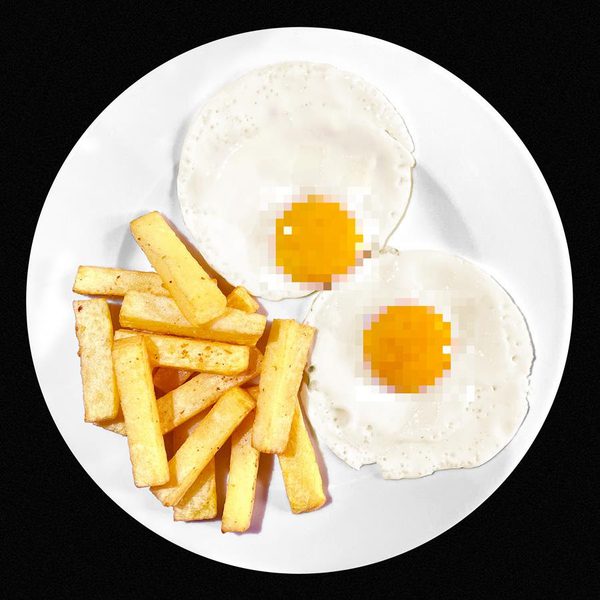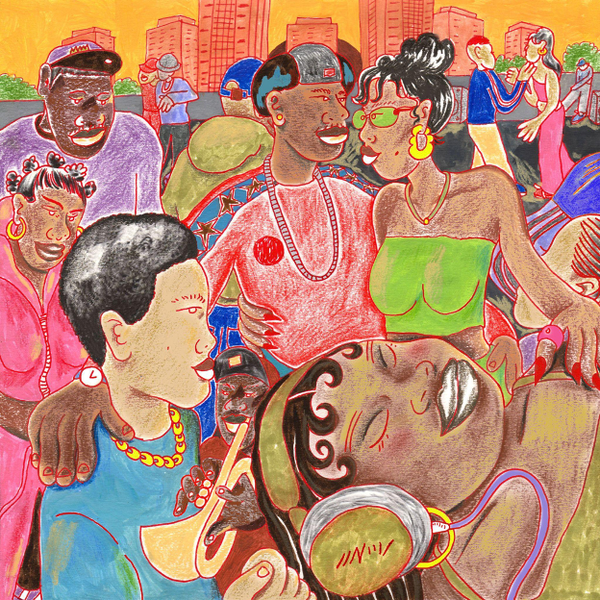I fucking despise flying. I do it with average frequency, but far from growing accustomed, with each stomach churning, fist-clenching takeoff I become yet more convinced that I will definitely die. Horribly, painfully; maybe burning alive in a warped fuselage, or being overcome by a strong current after having plunged into the marble black sea. It’s no fun.
The descent into Bergen, though, must surely be amongst the best arguments available to those who won’t shut up about how great air travel is. Norway’s second city sits amidst a splatter of beautiful, tiny islands of the sort that one imagines exist only in cereal-box depictions of Scandinavia. As the plane drops further, it becomes clear that these peculiarly beautiful dollops of land are actually inhabited. Wooden houses begin to appear, then the odd 4×4 – and then, suddenly, you’re on the tarmac and you didn’t meet your inevitable demise after all.
Bergen is home to just 260,000 people, making it roughly as populous as Reading, but, unsurprisingly, a far more agreeable place to spend a long weekend. The city is at the vanguard of Scandinavia’s admirable and continuing push for public art – a drive that is illustrated perfectly by Ekko Festival.
Ekko is a week-long season of electronic music and visual art events, staged in a handful of different venues around the port city. The lineup is intended to demonstrate the diversity of electronic music, from the accessible to the abstruse, alongside audio-themed installations from a handful of visual artists. The Line Of Best Fit travelled out for the final weekend of the season, and found a few hundred Bergen residents ready to embrace the most adventurously programmed festival we have ever attended.
**
Our most-anticipated show of the weekend came on the first evening. Robert Henke is best known to some as one half of Monolake, and to others as one of the founding fathers of Ableton – itself one of the key foundations of contemporary electronic music.
I’ve watched videos of Henke many times. They tend to involve the artist sitting in his stark, business park-like studio somewhere in Berlin, explaining the intricacies of granular synthesis to dewy eyed Ableton users like me. It was odd, then, to see the man himself, kitted out in trademark tie and ear plugs, presiding over a darkened room housing, amongst others, some confused toddlers.
Henke’s current show, ATOM, is a collaboration with installation artist Christoph Bauder. The principle is quite simple; Bauder has built a collection of 64 helium balloons, tethered to the ground with flat electrical wire, and each attached to a small motor. The balloons are triggered by Henke’s (apparently broadly improvised) music, moving and lighting up in a way that both signifies and complements the sound.
A bit trite, yes? Well, actually, no. What sounds on paper rather like a Central Saint Martins degree show abomination is, in fact, a compelling event that manages to … Henke’s score is predictably excellent, moving gradually but inexorably from spacious abstraction towards thudding, crunching tech – but even at its most abrasive the show captivates even the toddlers, enthralled as they are by the startlingly beautiful movements being played out in front of them.
ATOM’s great strength is in the fact that this is not a piece of visual art set to music, or a piece of music with visual accompaniment. Instead it is a … in which the elements play against and in tandem with each other, the balloons offering both a gripping counterpoint and a way in to the music.
Henke and Bauder’s piece, which was performed at a small arts centre by the docks, is precisely what I was expecting Ekko to be: a stimulating combination of visual art and forward-thinking electronic music, presented with perfectly judged Scandinavian uber-modernity. More ‘art’ than music.
Friday, then, came as something of a surprise. The centre-piece of the weekend, the night saw eight acts playing across two rooms in an old sardine factory; a stunning, pseudo-Brutalist construction overlooking the water, the sardines long gone, now replaced with a chichi new restaurant and a cavernous arts centre.
Opposite the restaurant a few dozen impeccably dressed young Scandinavians, all quiff and cotton, milled around playing with a series of interactive art pieces based loosely around the ideas of sound and cybernetics. In one the viewer completed a circuit with their finger, making U-boat tones by pressing against a piece of lead-flecked paper. In another people ran, slightly self-consciously, along a wall lined with speaker cones, changing the sound by varying their speed.

Further into the bowels of the venue we found a boxy room, filled with enough smoke to make it virtually impossible to navigate, with a small stage in the middle. After a bit of milling around, two black-clad men and a white-robed woman appeared, and installed themselves amidst an endless tangle of cables and blinking synths.
This was the big centrepiece of the festival – a work commissioned specifically for the occasion. Given the forward-thinking nature of much of the programme, then, it was a shame that WHITE turned out to be so oddly anachronistic. The piece was roughly split into two, the first section characterised by pseudo-industrial
A couple of drinks later we returned to the room, only to find it completely reorganised; the stage was moved to one end, roughly doubling its capacity and turning it from odd little performance space into hangar-like club venue.
The room was, in fact, then much better suited to the rest of the lineup. Gone was the vaguely inscrutable esoterica, replaced with straight-up, electro-inflected pop. The arts centre had become a club and, it appeared, the Norwegians were interested in exploring the idea of possibly having a party.
Put Your Hands Up For Neo-Tokyo, whose unwieldy name has previously featured in our Songs Of The Day, were first up – and virtually nothing like I had anticipated. The black-clad bunch maintained much of the musical theatre excess that previous Song Of The Day ‘Blood of Brethren’ had in such abundance, but the execution was sadly lacking. There was a sense of amateurishness; of a school band thrust onto a large stage. Rhythmically interesting and with moments of melodicism, but ultimately disappointing.
Much more promising were Casiokids – a band who, one imagines, would be headlining the second stage at every festival in the world if they were singing in English. Following a strange ritual involving women dressed up as Cyclopeses, the Bergen band ripped through a collection of instantly catchy pop songs in the Metronomy mould. They are the least likely looking band, all gangly limbs and ill-fitting clothes, but what they like in visual stimulation they make up for with distorted odd-pop delights, executed with startling precision.
The set closed with half a dozen enormous balloons being lobbed into the crowd (not, as I initially thought, the Henke balloons repurposed) and, in the ensuing crush, I managed to catch not one but two pints in the face. It’s testament to the excellence of Casiokids that it is the band, rather than the beer, that is foremost in my memory.

Outside, it seemed that everyone had suddenly become hilariously, incomprehensibly drunk. Some Norwegians with whom I’d been chatting before the show gave up on English (and, indeed, there is no reason why they should have been pandering in the first place to my complete inability to grasp even the most basic Norwegian) and instead began speaking in virtually every European language, all at once. This is a tendency that I noticed over the course of the 72 hours I spent in Bergen – and one that was particularly prevalent, oddly, in 7-11 convenience stores. As soon as it becomes obvious that you’re not Norwegian, in an attempt to make you feel as comfortable as possible Bergen residents simply translate each word of a sentence into a different language, hoping that you’ll be familiar with at least one of them. It’s a lovely gesture, and one that renders even the most basic transaction virtually impossible.
Back inside the crowd had thinned out for headliners 120 Days. Thus the incomparable benefits of local knowledge were highlighted – because 120 Days are, in fact, an abomination. A group of men approaching middle age, playing irredeemable XTRMNTR-lite toss, with the most punchable, preening frontman I’ve ever had the misfortune to witness. An absolutely horrible end to an otherwise very enjoyable, if sometimes frustrating evening.
**
As Ekko is more of an arts season than a conventional festival, the shows are all in the evening. During the day the average British visitor will find their options limited by expense. The very cheapest meal I could find was a cornershop sandwich, which ran to a little over £6. (Beer, since you ask, is served in a measure of roughly two-thirds of a pint – one of which will set you back just shy of a tenner. Top tip: Scandinavian beer, even from outside Norway, is not considered to be imported, and is therefore a slightly less eye-watering £7 or so. Yes, I know.)
Imagine my delight (and frankly relief), then, to receive a text from one of the festival’s volunteers, asking if I would like to spend Saturday afternoon at a catering fair.
I didn’t quite understand what I was doing when I arrived at the Grieghallen, Bergen’s main concert hall, to meet my new friend. He took me into the basement and told me that I needed to make up the name of a restaurant at which I could reasonably be believed to be in some position of authority. I panicked and couldn’t think of anything on the spot – so apologies may be due the Star of Bethnal Green, which I imagine might even now be receiving literature addressed to me and written in Norwegian.
Inside, dozens of caterers and wine merchants extolled the virtues of their products while I nodded furiously and smiled at what I hoped where the appropriate moments. A couple of hours later, the delightful buzz of free alcohol in our skulls and a couple of bags of cheese in our hands, we headed to the bar in which my friend worked. There we knocked over a glass, tried some Snuss, and beat a hasty retreat to my friend’s third floor flat for Norwegian port. Saturday afternoon well spent.
**
There were two shows on the agenda for the evening, the first of which was in the arts centre that had played host to Robert Henke a couple of days previously. This evening, though, we were going to see Pierre Henry, the 84-year old semi-mythical founder of musique concrète.
Gone were the balloons – replaced, perhaps even more impressively, by just over 50 speakers of varying sizes, in a symmetrical configuration at one side of the room. On the other, tiered seating. And in the middle a single, dusty, large mixing console of the sort that one might expect to find in a down-on-its-luck recording studio some time in the mid ‘70s.
In near darkness the audience was addressed by an enviably dressed man who told us that we weren’t to take photographs, and that the pieces we were about to hear were to be performed in honour of Henry’s late assistant. Halfway through the speech, though, the doors opened and a stooped man hobbled in to a round of genuinely excited applause, on the arm of a slightly younger woman. With jet white hair, a motheaten, oversized cardigan and horn-rimmed glasses he looked every bit the vanguard of electronic music – if that vanguard spend its time smoking outside Parisian cafes and being rude to waiters.
Henry’s show really cannot be referred to as a ‘show’ in any accurate sense. In fact it is more like an hour of enforced listening. The audience sits facing the speakers; Henry sits with his back to the audience. Occasionally he pushes a fader up or down on his desk, on which sits a piece of paper presumably with cues. And from the speakers comes a series of startlingly beautiful, beautifully abrasive sounds.

Henry’s music consists of countless field recordings, warped moments of tuneless orchestras, and oddly disembodied voices. In the composer’s hands they become fugues; gothic elegies full of sorrow, full of some haunted past, but remarkably contemporary.
He is helped, one suspects, by the fact that most of the samples he uses are already fairly musical; much of the set relies on ‘found’ classical recordings. But the scraps are constituted in such a uniquely unsettling and yet oddly soothing way as to suggest a truly extraordinary breadth of imagination.
Henry’s second piece is the weaker of the two, relying too heavily on beats – an area in which he flounders. But in the round the two hours we spent in his company provided a glimpse of remarkable talent; one whose scrapbook approach to music foreshadowed much of what he preceded.
Walking to the next venue with another journalist, I remarked on how odd it was to watch an elderly man gently push faders for an hour, triggering pre-prepared sounds – only to realise that, age aside, this is precisely what we pay to see producers do every night of the week in various basement venues. Henry was, and remains, truly ahead of his time.
Finally, flu setting in and wallets heart attack-inducingly light, we wandered over to another venue for the final show of the weekend. Ekko closed in suitably opulent fashion, taking over the two front rooms of the Kunsthall – a beautiful gallery set on Bergen’s main square. Inside a similar crowd to those seen at the Henke show were milling around, watching a video installation in the foyer or perching on bar stools looking out over the square.
Everyone seemed a bit confused about where they should be looking. There was a DJ on one side of the (very small) room, but it was pretty clear that Sail A Whale, the first act on, weren’t going to be setting up there. Quite a coup de théàatre, then, when someone emerged from the crowd with a handheld projector and shone a smiley face onto a gauze above the doorway, heralding the arrival of Sail A Whale.
Except they didn’t really arrive. Rather, they played behind the screen, about ten feet up, their forms half-obscured with beautifully compiled footage of various insurrections from around the world. Footage which, for about three minutes, held the attention – until we realised quite how vacuous, quite how soul-crushingly bad the entire affair was going to be.
A few top tips for bands aspiring to greatness. Flashing up the names of philosophers makes you neither literate nor interesting. Building a code of pseudo-new age symbolism will not detract from the paucity of musical ideas on display; nor will it divert attention from the fact that you are playing tortuously poorly executed renditions of the most clichéd, white boy r’n’b Blog Music imaginable. And if you’re going to peddle that toss, at least try to do it in tune.
Optimo began soothing the anger almost immediately, causing an army of fantastically suave Bergen media types, newly installed on the dancefloor, to start convulsing as only the Glaswegian pioneers can. As the dancing started in earnest, I began to feel very much like a tourist, on my own, in a foreign club – and, half an hour later, I slipped out into cold the likes of which I’ve seldom experienced before; the sort of cold that inserts itself under your fingernails and then sits there, singeing your nerve endings.
**
Ekko ought to be the model for the contemporary music festival – precisely because it isn’t simply a music festival. It is adventurously programmed, and demonstrates a remarkable understanding of the extraordinary breadth of art that comes under the banner of ‘electronic music’. Ekko’s organisers recognise that there is just as much merit in a pop-rock band as there is in a cybernetics installation, and they have had the bravery to put together a festival that reflects this. Generally it works; sometimes it doesn’t. But I would take an event like Ekko, with its eyes set firmly on the future, over yet another plodding, identikit music event any day of the year.
- Disaster capitalism exposé on rise and fall of Vice magazine gets first trailer
- Native Sun announce their debut album, Concrete Language
- Mark Ronson and RAYE unveil live session, "Suzanne (At The Church)"
- Jens Lekman announces forthcoming album, Songs For Other People’s Weddings
- MJ Lenderman, Hand Habits and more feature on tribute album, I Will Swim to You: A Tribute to Jason Molina
- Maruja stand in solidarity with Palestine on new single, "Saoirse"
- Skepta ignites UK vs US rivalry with new track, "Friendly Fire"
Get the Best Fit take on the week in music direct to your inbox every Friday

Wet Leg
moisturizer

MF Tomlinson
Die To Wake Up From A Dream

BIG SPECIAL
National Average





